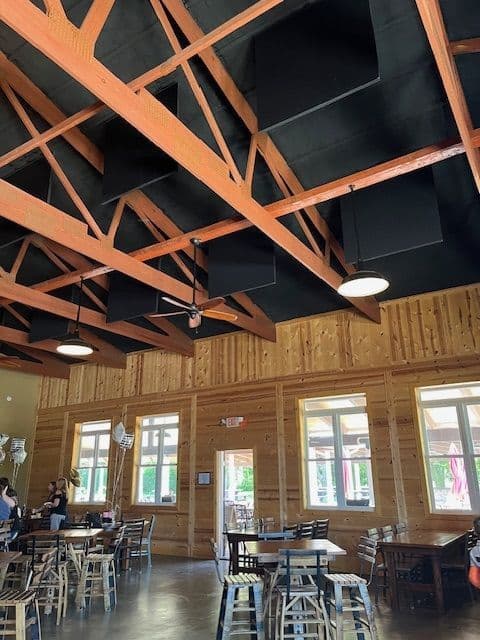Lighting Requirements in Hazard, Kentucky
Lighting Regulations in Hazard, Kentucky: Understanding the Limited Requirements in Coal Country
Introduction
Nestled in the heart of Kentucky's Coal Fields, Hazard has a rich history dating back to its founding in 1884. From its humble beginnings as a small settlement with only a dozen families during the Civil War to its growth spurred by the Louisville & Nashville Railroad in the early 20th century, Hazard has evolved while maintaining its unique character.
The city's development has been shaped by both its coal mining heritage and the recurring floods that have impacted the community over the decades. These historical factors have influenced Hazard's approach to infrastructure and public safety, including its limited but important lighting regulations.
Quick Reference Guide to Hazard's Lighting Requirements
• Construction/Excavation Sites: Red warning lights required at night for street obstructions • Street Lighting: Must comply with City or County Engineer specifications • Commercial Properties: Eligible for beautification grants that include lighting improvements • Parking Areas: Public parking used at night must be adequately lit • Heavy Industry: Limitations on light flashes or glare that extend beyond property boundaries • Limited Storage Areas: Only essential lighting permitted
Construction and Public Safety Lighting
Warning Lights for Public Safety
One of the most specific lighting regulations in Hazard pertains to construction sites and public safety. According to §95.14 of the city code:
• Minimum Requirements: At least two illuminated red lamps must be installed and maintained during nighttime • Placement: Lamps must be securely and conspicuously posted at or near each end of any street, sidewalk, or alley obstruction/excavation • Extended Obstructions: For spaces exceeding 50 feet, at least one additional lamp is required for each additional 50 feet or portion thereof
The Historical Context for Safety Lighting
Given Hazard's history with infrastructure development following the railroad's arrival and the city's expansion, these safety lighting requirements reflect the community's practical approach to growth while maintaining public safety.
Commercial and Public Area Lighting
Parking Area Illumination
The city code states that "Parking and other public areas used at night shall be adequately lighted." Additionally, private areas must be "adequately protected" from public area lighting, suggesting concerns about light trespass.
Balancing Light Needs and Light Pollution
The regulations note that "Public streets may also require protection from excessive glare from lighted areas," indicating the city's awareness of potential light pollution issues while ensuring sufficient illumination for safety.
Commercial Lighting Incentives
Hazard offers financial support for businesses looking to improve their lighting:
• Beautification matching grants of up to $500 for eligible lighting projects • Facade/signage grants covering up to 80% of total project costs (not exceeding $5,000) • Eligible improvements specifically include "exterior lighting or interior storefront window display lighting that remains on during evening hours"

Industrial and Storage Area Lighting
Heavy Industry Lighting Limitations
The code defines "Heavy Industry" as including operations where "light flashes or glare" may be "felt off the premises." This suggests limitations on industrial lighting that extends beyond property boundaries.
Limited Storage Areas
The regulations specify that "Limited Storage" areas must be "void of utilities except for essential lighting." This balances safety needs with utility restrictions in certain areas.
Street Lighting Standards
Engineering Specifications
The code simply states: "Provisions for street lighting shall be made in accordance to the specifications of the City Engineer or County Engineer, whosoever has jurisdiction, or the agency having jurisdiction."
This approach allows for technical expertise to guide street lighting implementation rather than codifying specific requirements that might become outdated.
What Property Owners Should Know
Commercial Property Considerations
If you own a commercial property in Hazard, you should be aware of:
• Opportunities for grant funding to improve your property's lighting • Requirements to ensure parking areas used at night are adequately illuminated • Responsibility to prevent light trespass onto neighboring private properties
Construction and Development Requirements
When undertaking construction work that affects public ways:
• Plan for appropriate warning lights during nighttime hours • Ensure compliance with the specific number and placement of warning lights • Consult with the City Engineer regarding any street lighting provisions
For Industrial Property Owners
• Be mindful of light emissions that extend beyond your property boundaries • Understand that excessive light flash or glare could potentially classify your operation as "Heavy Industry"
Supporting Hazard's Lighting Vision
Bock Lighting understands communities like Hazard with rich historical backgrounds and evolving infrastructure needs. As a manufacturer with roots dating back to 1918, we appreciate the balance Hazard maintains between honoring its coal mining heritage while addressing modern safety and aesthetic concerns.
Our experience with communities in transition helps us provide context-sensitive lighting solutions that respect local regulations while enhancing safety and community character. We recognize that in communities like Hazard, lighting must serve practical purposes while respecting neighboring properties and preventing unnecessary light pollution.
Bock Lighting serves as an educational resource on lighting best practices, helping property owners navigate the specific requirements in their communities while supporting the distinctive character that makes places like Hazard unique.
Conclusion
While Hazard's lighting regulations are not extensively detailed in the city code, they do address key concerns around public safety, commercial development, and preventing light nuisances. The regulations reflect the city's practical approach to infrastructure and development.
Property owners should consult with city officials for the most current requirements and specifications, particularly regarding street lighting provisions that defer to engineering specifications. The city's grant programs for commercial lighting improvements also demonstrate Hazard's commitment to supporting business development while enhancing the community's appearance.
For a community with roots in coal mining and a history of resilience through floods and economic transitions, these lighting regulations help maintain Hazard's balance between growth and preserving the character that makes this Kentucky community special.




